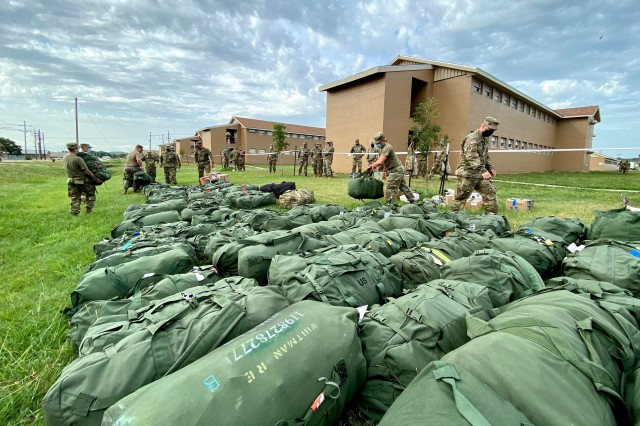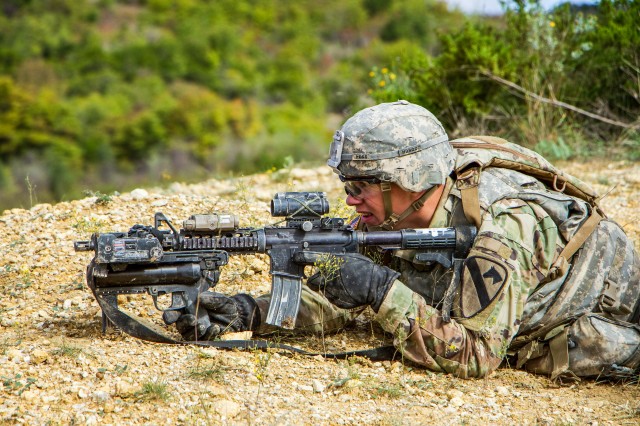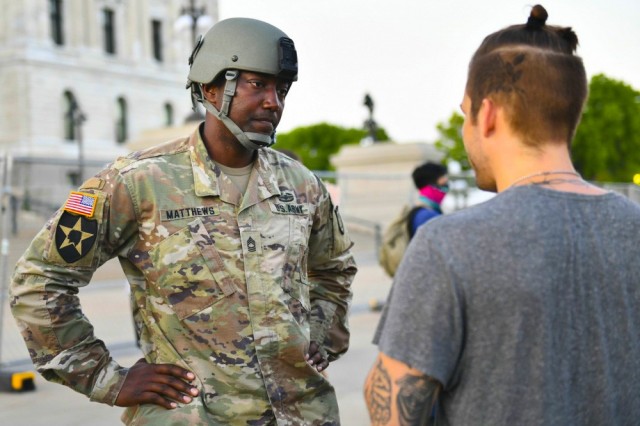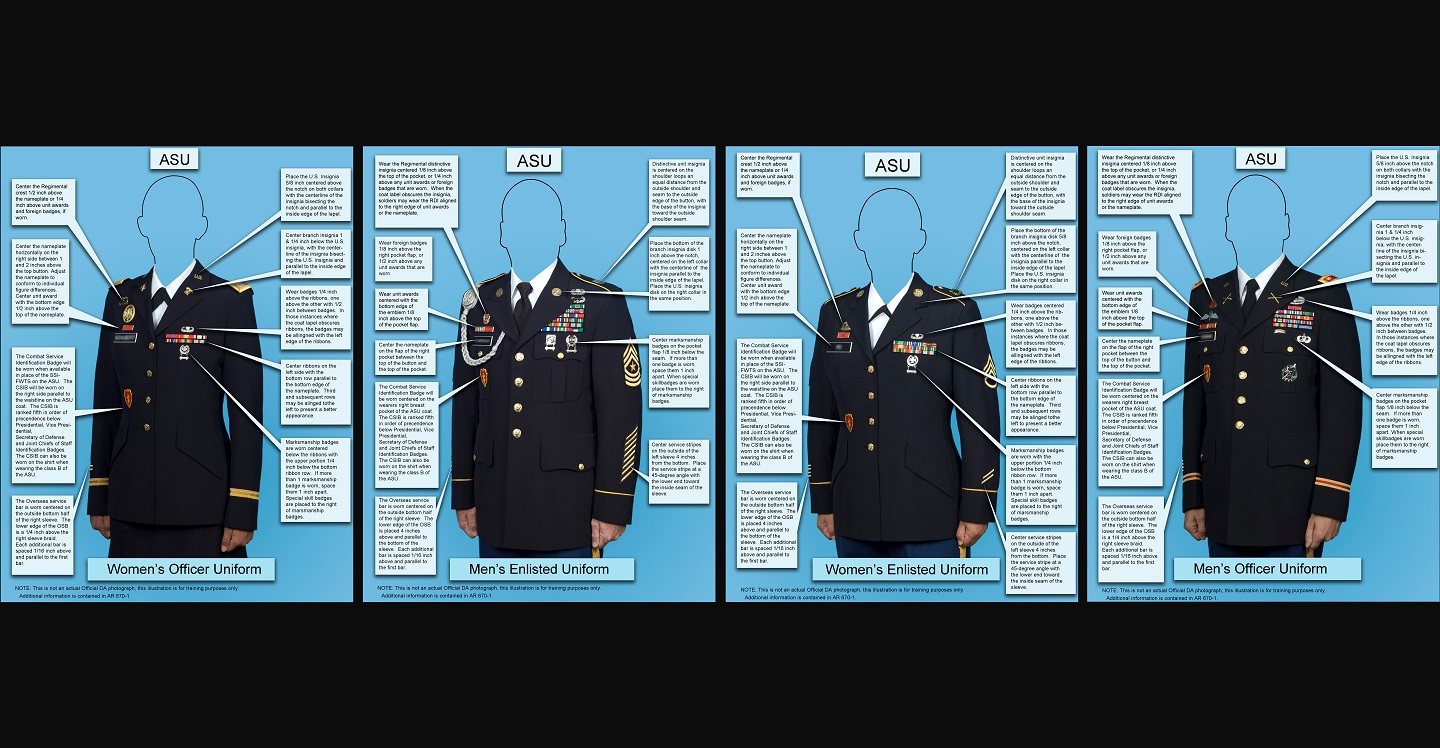
Army History
Winter 2009
Military Lessons from Experience in This Decade
There are many lessons from the past several years that are changing the way the U.S. defense establishment operates. The purpose of this short essay is to highlight some of those changes and foster discussion about how they will impact the future of warfare. Understandably, the first question many might ask is “why would a judge advocate—a lawyer—be addressing this topic?” The answer reflects one of the most important changes I will discuss. Law and order plays an ever larger role in military operations, certainly more so than at any other time in history. As General James Jones, then the commander of the North Atlantic Treaty Organization (NATO), famously observed in a 2003 Parade magazine article that to go to war today, you “have to have a lawyer or a dozen. It’s become very legalistic and very complex.”1
Indeed, the most devastating setback in the entire war in Iraq involved not force of arms, but law, more specifically illegalities. I am speaking of Abu Ghraib. Lt. Gen. Ricardo Sanchez, then the senior American commander in Iraq, rightly used customary military terminology in saying that the lawlessness of Abu Ghraib was “clearly a defeat.”2 The effect was indistinguishable from a conventional military disaster.
In today’s world, Clausewitz’s maxim that war is a continuation of politics by other means has a distinct legal flavor. We increasingly find that our adversaries’ principal means of trying to counteract the superiority of our equipment—airpower, for example—is to claim we are using it illegally in some way.
This has had an effect on our procurement. Some weaponry, such as the Small Diameter Bomb, was explicitly developed to help minimize collateral damage so as to limit the enemy’s opportunity to propagandize such incidents.3 Billions of dollars worth of intelligence, surveillance, and reconnaissance (ISR) assets are being brought to bear for this purpose as well.
Meanwhile, leaders today readily seek advice from nontraditional sources, particularly when they provide what they need to hear, versus what they want to hear. These days an overly enthusiastic “can-do” attitude can prove disastrous if it causes the staff to be less than candid with the decision maker. Candid advice, even when unwelcome, is the military lawyer’s stock and trade.
Different perspectives are useful. Lawyers are trained to dispassionately scrutinize contentions, analyze data, and effectively articulate a range of solutions sensitive to the political dimension that pervades national security matters today. This is what senior decision makers really need.

Other nontraditional advisers are also proving valuable. A striking example is the development of the much-heralded Army and Marine Corps counterinsurgency manual.4 In drafting what has proved to be a bestseller, the Army cleverly assembled what one writer called an “odd fraternity” of experts including “representatives of human rights nongovernmental organizations (NGOs), international organizations, academic experts, civilian agency representatives, [and even] journalists.”5 Although I have critiqued parts of the manual, this is one aspect that I think was sheer genius, and a model for development of government policy.
Even the widest range of expertise, however, cannot definitively predict the future. To restate President Dwight Eisenhower’s dictum, “Every war is going to astonish you in the way it has occurred and in the way it is carried out.”6 Although most people would agree that we need to be prepared to conduct operations across the full spectrum of conflict, there is real debate as to where the weight of the effort ought to go. Columnist Jim Hoagland probably went too far recently in characterizing these discussions as “The War at the Pentagon,” but it is true that there are diverse and strongly held opinions on the subject.7
Plenty of experts insist that we are in an era of persistent conflict. Such conflict, the thinking goes, will take place in failing or failed states and will often involve nonstate actors employing nontraditional means. This is no doubt true, but, in my opinion, the problem arises when people insist that war with peer and near-peer competitors is unlikely, and therefore, the overwhelming focus of the U.S. military should be to prepare to conduct operations at the low end of the spectrum.
This is not to suggest that such operations do not deserve to be given resources. They do, and indeed are, to a very high degree. According to the Department of Defense (DoD), the 92,000-troop increase in Army and Marine forces over five years is “an adaptation [for today’s] prolonged, irregular type of campaign.”8 Additionally, the DoD reportedly is planning to spend $22 billion to acquire Mine Resistant Ambush Protected (MRAP) vehicles, which are mostly limited to counterinsurgency situations.9
Surprising to me, one expert says (and others may agree) that for America in the next decade, “colossal boots-on-the-ground efforts are not only possible, they also are likely.”10 Given America’s experience in Iraq, I am not so sure. Despite the real success there over the past year, a recent poll found that 62 percent of Americans still think that the United States should have stayed out of Iraq.11
In any event, we must do more than just assess the likelihood of conflict occurring at a particular point on the spectrum; we must also calculate the magnitude of the potential loss.12 Thus, in making decisions in a resource-limited environment, strategists ought to distinguish carefully between extremely dangerous threats and the genuinely existential ones.
There can be no doubt that in an interconnected, globalized world, what happens in a failing state impacts U.S. interests. It is also unquestionably true that terrorists and other nonstate actors who operate in such a state could cause horrifying harm to this country, especially if they obtained one or more weapons of mass destruction (WMDs). Nevertheless, I would argue that only peer-competitor nations have the ability to end the existence of the United States. Among other things, only a nation-state could acquire—and deliver to our shores—WMD in sufficient numbers and sophistication to destroy our country.
Therefore we must first and foremost be absolutely certain that we have done everything possible to prevent such a terminal catastrophe. We must be able to deter and, if necessary, have the conventional means to defeat adversaries able to wage war at the high end of the spectrum. Thus, even if one accepts that the likelihood of a peer-competitor war is small, the magnitude of the potential loss is just too great to make national security decisions simply based on the expected frequency of conflicts where the stakes are not as great.
For a number of reasons, I believe, to paraphrase an axiom attributed to Plato, that “only the dead have seen the end of war between peer-competitor, nation-states.” Yet too many people—including young officers who seem captured by their experiences in today’s conflicts—are convinced that tomorrow’s wars will be some replay of Iraq or Afghanistan.
Dealing with this conundrum brings us to the importance of finding ways to prevent the next failed state. The military calls this “Phase Zero” operations—that is, efforts aimed at stabilizing a country before it collapses. I certainly would count myself among those who would like to see the capabilities of the military’s interagency partners become stronger. For example, the secretary of defense has repeatedly made the point that better funding of foreign affairs is in our national security interest.13 Few in uniform would disagree.
Of course, the military also has Phase Zero responsibilities. Indeed, the DoD declared in 2005 that “Stability operations are a core U.S. military mission that… shall be given priority comparable to combat operations.”14 But given our tradition of civilian control of the military and our respect for the free enterprise system, there is something disquieting about deploying America’s most authoritarian and socialistic arm, our armed forces, to teach struggling foreign countries how to build social, political, economic, educational, and other democratic institutions. I would much prefer civilians—even contractors—to be the face of America in those situations.
Along those lines, if we are talking about nonmilitary instruments that might help us avoid future war, consider the president’s clean energy initiatives.15 The development of ecofriendly alternative fuels technologies, if shared with the rest of the world, may be among the most fruitful national security investments possible.
The pendulum has swung too far in denigrating the value of technology in war. In some quarters, belittling the role of high technology has become the sport of choice. Anything that smacks of high-tech war fighting is ridiculed as “legacy” or “Cold War” thinking. I fully appreciate the dangerous potential of low-tech war. In 1996, I wrote a cover story for the Weekly Standard entitled “How We Lost the High-Tech War of 2007.”16 In that fictionalized piece, I warned against adversaries who would use terrorism and other asymmetric techniques to defeat an overly high-tech U.S. military. Likewise, in a 1998 essay, I warned of enemies using airliners as asymmetric weapons.17 Today, however, we are at risk of overcorrecting and dangerously undervaluing high technology.
Historians Ronald Haycock and Keith Neilson make an important point: “Technology has permitted the division of mankind into ruler and ruled.”18 Technology is part of our culture; it is, in fact, our asymmetric advantage. Recently, strategic theorist Colin Gray noted, “High technology is the American way in warfare. It has to be. A high technology society cannot possibly prepare for, or attempt to fight, its wars in any other than a technology-led manner.”19
Some underrate technology because they are drawing the wrong lessons from history. For example, in writing the new counterinsurgency manual, the drafters relied heavily on lessons learned from insurgencies of the 1950s to 1970s. These were eras when, significantly, high technology generally, and airpower specifically, had little to offer. Hence, it is no surprise that the discussion of airpower in the 2006 counterinsurgency manual is limited to a five-page annex, and that short discussion is leery of airpower out of fear of collateral damage.
Ironically, current precision air weaponry, especially the new intelligence, surveillance, and reconnaissance (ISR) platforms, have produced what retired Army General Barry McCaffrey insists is “a 100-year warfighting leap-ahead” that has “fundamentally changed the nature of warfare.”20 The result? Human Rights Watch activist Marc Garlasoc recently conceded that he thinks “airstrikes probably are the most discriminating weapon that exists.”21
Equally important, today’s insurgent is not low tech. In a recent article, retired Army officer John Sutherland invented the word iGuerrilla for what he describes as the “the New Model Techno-Insurgent” who exploits technology in a wide variety of ways.22 Sutherland argues that the iGuerrilla “cannot be swayed by logic or argument” and insists this kind of insurgent is markedly different from those of the twentieth century who, he contends, are relegated to the “dustbin of history.” Yet much of our current doctrine is premised on twentieth-century insurgents.
To me, this risks missing the opportunity to exploit technological opportunities. We may be reaching the tipping point where the research and development capabilities of the nation-state can significantly exceed the abilities of an adversary dependent on improvising from off-the-shelf technologies. Further, iGuerrillas, I submit, are growing up addicted to the Internet, cell phones, PDAs (personal digital assistants), electronic transfers, credit cards, and other technological artifacts of globalized society. Therein lies a huge vulnerability. Anything that emits or connects to an emitter brings us closer to General Ron Fogelman’s prediction in 2000 that we will be able to “find, fix or track, and target anything that moves on the surface of the Earth.”23
This brings us to our final point: we need to look for ways to substitute machines for the boots of young Americans wherever possible. This is emphatically not a call for smaller numbers of the superb ground forces in our military. The point is that we need to provide decision makers with options that can minimize the need for U.S. troops to go in harm’s way.
Leveraging technology will have to play decisively in the answer. We should favor equipment that is useful across the whole spectrum of conflict. A quick illustration: air strikes in Iraq increased fivefold in 2007 over 2006.24 Perhaps equally or, probably, more important, is the almost unbelievable growth in ISR, particularly in unmanned aerial platforms that General McCaffrey references.25
I would suggest that the marriage of persistent ISR with precision-strike capability is the single most important military equipment innovation of the decade thus far. Unsurprisingly, recent reports name ISR assets as General Petraeus’ “top hardware priority in Iraq.”26 These developments, facilitated by advances in command, control, and communications, have turned such warplanes as B–52s and B–1s, as well as a range of fighter aircraft, into close air support platforms equally able to strike a single insurgent in an urban setting, or attack a high-tech armored brigade charging across a plain.
I am not advocating airpower only or even airpower-centric solutions. I am just pointing out that this is one area where capabilities that have tremendous value in irregular war also can be flexibly employed at any level of conflict. There are certainly other technologies out there that have similar utility; the Army’s satellite-guided Excalibur artillery round is one example.27
The bottom line is that we must have a full-spectrum military that recognizes the gravity of peer-competitor war, that leverages our technological inclinations, and that operates in a genuinely joint and independent way. As Billy Mitchell put it, “Nations nearly always go into an armed contest with the equipment and methods of a former war. Victory always comes to that country which has made a proper estimate of the equipment and methods that can be used in modern ways.”28
Notes
This article is an edited version of a copyrighted essay that was distributed as an enote in June 2008 by the Foreign Policy Research Institute (FPRI) and was posted on the institute’s Web site, www.fpri.org
- Lyric Wallwork Winik, “A Marine’s Toughest Mission (Gen. James L. Jones, Supreme Allied Commander, Europe),” Parade Magazine, 19 Jan 2003.
- Tom Brokaw, “Gen. Sanchez: Abu Ghraib ‘Clearly a Defeat,’” 30 Jun 2004, msnbc.com.
- Fact Sheet, Department of the Air Force, GBU-39B, Small Diameter Bomb, Aug 2006, available at http://www.af.mil/factsheets/factsheet.asp?id=4500.
- Headquarters, Department of the Army, Field Manual 3–24, Counterinsurgency, 15 December 2006.
- Sarah Sewall, “Modernizing U.S. Counterinsurgency Practice: Rethinking Risk and Developing a National Strategy,” Military Review 86, no. 5 (September–October 2006).
- Stephen E. Ambrose, Americans at War (Jackson, Miss, 1997), p. 195.
- Jim Hoagland, “The War at the Pentagon,” Washington Post, 13 Apr 2008.
- John T. Bennett, “Interview: Ryan Henry, U.S. Principal Deputy Undersecretary of Defense for Policy,” Defense News, 7 May 2007.
- Tom Vanden Brook, “Pentagon: New MRAPs Saving Troops’ Lives,” USA Today, 4 Apr 2008.
- Joseph J. Collins, “From the Ground Up,” Armed Forces Journal (October 2006).
- CBS/New York Times Poll, 28 Mar–3 Apr 2008.
- See, generally, “Risk Assessment,” Wikipedia, 23 Mar 2008.
- See, for example, Robert M. Gates, Secretary of Defense, Remarks Delivered at the Center for Strategic and International Studies, 26 Jan 2008.
- Department of Defense (DoD) Directive 3000.5, Military Support for Stability, Security, Transition, and Reconstruction (SSTR) Operations, 28 November 2005, at par. 4.1, available at http://www.dtic.mil/whs/directives/corres/pdf/300005p.pdf
- George W. Bush, State of the Union 2008, 28 Jan 2008, available at http://www.whitehouse.gov/news/releases/2008/01/20080128-13.html
- Charles J. Dunlap Jr., “How We Lost the High-Tech War of 2007,” Weekly Standard, 29 Jan 1996.
- Charles J. Dunlap Jr., “Asymmetrical Warfare and the Western Mindset,” in Challenging America Symmetrically and Asymmetrically: Can America Be Defeated? ed. Lloyd J. Matthews (Washington, D.C. , 1998), p. 10.
- Ronald Haycock and Keith Neilson, eds., Men, Machines, and War (Waterloo, Ontario, 1988), p. xii.
- Colin S. Gray, The Airpower Advantage in Future Warfare (Maxwell Air Force Base, Ala.: Air University, 2007).
- Memo, Gen Barry R. McCaffrey for Col Mike Meese, U.S. Military Academy, 15 Oct 2007, sub: After Action Report, p.5.
- As quoted by Josh White, “The Man on Both Sides of Air War Debate,” Washington Post, 13 Feb 2008.
- John R. Sutherland, “The New Model Techno-Insurgent: iGuerrilla,” Armchair General (May 2008): 62.
- John A. Tirpak, “Find, Fix, Target, Engage, Assess,” Air Force Magazine (July 2000).
- See, for example, Anthony H. Cordesman, US Airpower in Iraq and Afghanistan: 2004–2007, Washington, D.C.: Center for Strategic and International Studies, 13 Dec 2007.
- See, for example, Daily Report, “Some Staggering Data,” 7 Apr 2008, airforcemagazine.com. Specifically, “For those of us wondering about the importance of overhead intelligence, surveillance, and reconnaissance capabilities to the ongoing fight, here are some illuminating numbers told to the Daily Report by Air Combat Command. Airborne ISR sensors monitored 60 targets in calendar year 2001 for change detection—to observe deviations over time that might indicate threat developments, such as variations in roadside pavement that might warn of the recent planting of a roadside bomb. In 2007, that number grew to 70,542, a whopping increase of 117,470 percent, according to ACC spokesman Maj. Tom Crosson. RQ/MQ–1 Predator unmanned aerial vehicles logged 4,380 hours in the air in 2001, providing overhead streaming video to support ground forces. In 2007, that number rose to 63,186 hours, he said. Further, E–8C Joint STARS tracked 12,000 moving targets in 2007; they tracked none in 2001. RQ–4 Global Hawk UAVs collected imagery intelligence on 3,687 targets in 2001, and 96,349 six years later, he said. U–2 manned surveillance aircraft collected Imint on 26,749 preplanned targets of interest in 2001, compared to 52,000 in 2007. Finally, in 2001, RC–135 Rivet Joints flew 3,360 hours; six years later, the hours increased to 8,184.”
- Matthew Cox and Gina Cavallaro, “Petraeus: ISR Gear is Key to Success,” 11 Apr 2008, armytimes.com.
- Matthew Cox, “GPS-guided Excalibur Artillery Round Debuts in Afghanistan,” 20 Mar 2008, armytimes.com.
- William Mitchell, Winged Defense (1924), reprinted in Roots of Strategy, bk. 4 (Mechanicsburg, Pa., 1999), p. 490.














